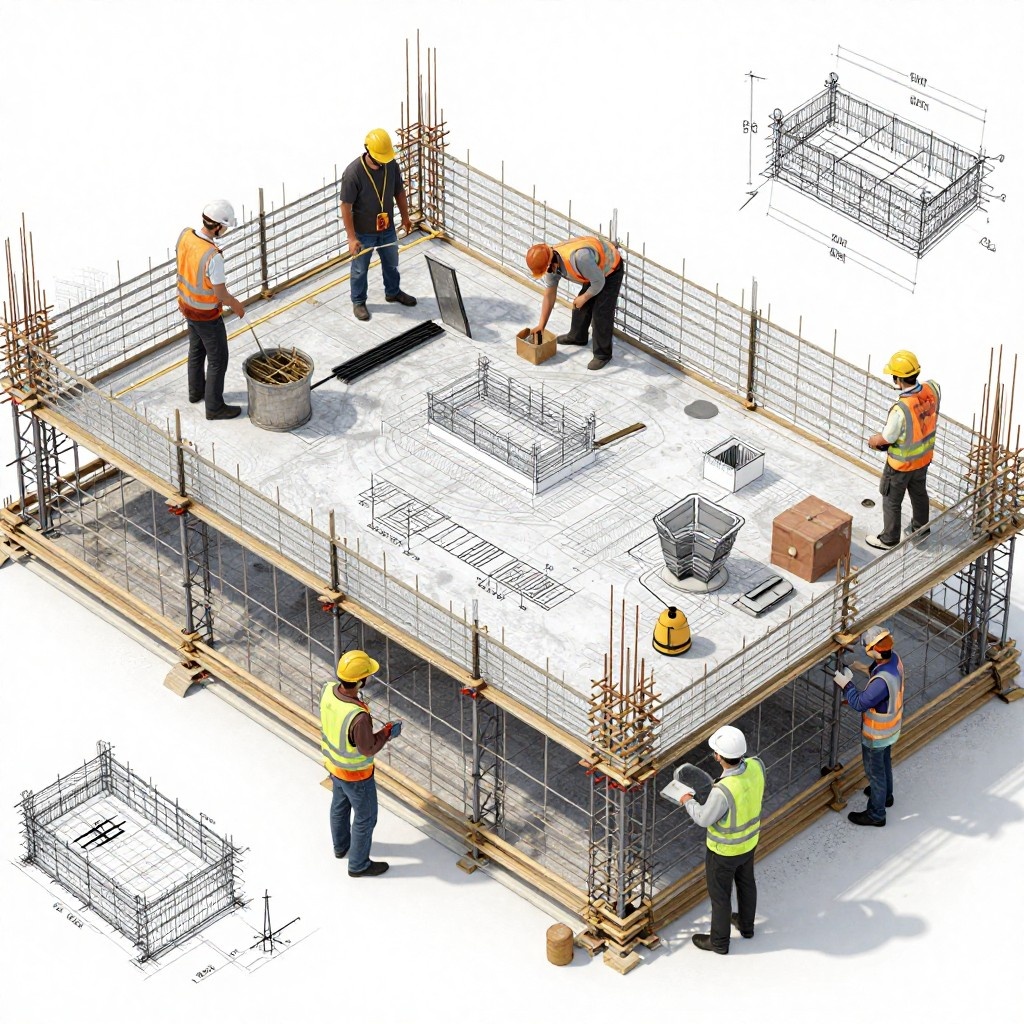Excited to explore the realm of architectural software?
Architects often rely on powerful tools like Revit, a key player in the field of BIM. This advanced software facilitates comprehensive digital representations, enabling architects to design and manage projects efficiently. Through robust 3D modeling features, architects can intricately model building components, ensuring a detailed and accurate virtual representation. Additionally, tools like Revit support real-time collaboration, allowing architects to work concurrently with team members and various disciplines. This not only enhances coordination but also minimizes conflicts, promoting a smoother design and construction process. Furthermore, the software's linked documentation ensures that any changes made to the model are reflected in real-time, ensuring accuracy and consistency throughout the design and documentation phases. In essence, these software solutions empower architects with advanced tools for design, visualization, and seamless collaboration.
Revit for Architects

Revit, integral to architects, offers potent BIM capabilities for a comprehensive digital representation. Beyond 3D geometry, it integrates a robust database encompassing materials, quantities, costs, and performance. In intelligent and interconnected design, Revit supports parametric design, enabling architects to create dynamic elements. Changes in one part of the model propagate seamlessly, ensuring a coherent design. The software fosters collaboration with engineers and contractors in the same digital environment, promoting real-time coordination. For efficient iteration and design options, architects leverage Revit's parametric modeling, allowing swift adjustments and exploration of diverse design alternatives. This amalgamation of features positions Revit as a cornerstone tool for architects, facilitating precision and collaboration throughout the design process.
Revit's BIM Capabilities:
- Integral tool for architects, providing potent BIM capabilities.
- Offers comprehensive digital representation beyond 3D geometry.
- Integrates robust databases for materials, quantities, costs, and performance.
- Supports parametric design for creating dynamic elements.
Collaboration and Coordination:
- Facilitates collaboration with engineers and contractors.
- Promotes real-time coordination in a digital environment.
- Seamless propagation of changes ensures design coherence.
Efficient Design Iteration:
- Enables efficient iteration and exploration of design options.
- Leverages parametric modeling for swift adjustments.
- Positions Revit as a cornerstone tool for architects.
Tailored 3D Modeling Features:
- Robust tools for detailed modeling of building components.
- Empowers architects to craft comprehensive virtual representations.
- Parametric modeling capabilities for responsive design elements.
Advanced Visualization Tools:
- Offers advanced visualization tools for realistic renderings.
- Enhances design communication and presentation.
Real-time Project Updates and Collaboration:
- Redefines collaboration with real-time project updates.
- Facilitates concurrent collaboration among multiple disciplines.
- Enhances coordination and minimizes conflicts in design and construction.
- Linked documentation dynamically connects plans, elevations, and sections to the live model.
Workshop XR for Architects
Workshop XR (Extended reality) offers an immersive workspace for architecture, BIM/VDC, and building engineering teams to collaboratively review 3D models in real-time and track issues. It enables seamless integration with Autodesk Construction Cloud, allowing teams to detect and address project issues early, mitigating potential rework or delays
Workshop XR distinguishes itself as the foremost virtual workspace for AEC design reviews, providing unmatched accessibility and connectivity.

Prominent features encompass:
- Dynamic Virtual Workspace:
Tailored for AEC collaboration, Workshop XR's immersive environment facilitates seamless teamwork at every proficiency level in VR. Teams delve deep into design intricacies, fostering detailed analysis.
- No-Prep Model Loading:
Simplifying the process, Workshop XR allows AEC teams to effortlessly access and review models from Autodesk Construction Cloud, regardless of size, in real-time.
- Full Integration with Autodesk Construction Cloud:
Streamlining workflows, Workshop XR seamlessly integrates with Autodesk Construction Cloud, providing direct access to project data. Teams benefit from a unified platform for Files and Issues, gaining spatial insights in VR and beyond.
With these capabilities, Workshop XR revolutionizes AEC collaboration, offering a cohesive and efficient environment for teams to analyze, discuss, and refine designs with ease.
Rendering tools
Lumion, Enscape, Unreal Engine, and V-Ray are widely used tools in the architectural industry, each offering distinct strengths in realistic rendering and visualization.
- Lumion:

Lumion is recognized for its ease of use and the ability to create highly realistic renderings with lifelike lighting and atmospheric effects. Its real-time rendering capabilities allow architects to see immediate feedback, and it boasts an extensive asset library, including trees, people, and vehicles. Lumion seamlessly integrates with popular 3D modeling software like SketchUp, Rhino, and ArchiCAD, allowing for quick and efficient updates as changes are made in the modeling environment.
- Enscape:

Enscape excels in real-time rendering and is known for its strong integration with virtual reality (VR), providing architects with immersive experiences of their designs. The Live Link feature ensures that changes made in modeling software such as Revit, SketchUp, Rhino, or ArchiCAD are instantly reflected in Enscape, streamlining the visualization process and enhancing collaboration.
- Unreal Engine:

Unreal Engine stands out for its photorealistic rendering capabilities and real-time visualization. It is particularly suitable for creating interactive experiences and virtual walkthroughs. While Unreal Engine can be integrated with various 3D modeling software through data exchange formats like FBX, it offers unparalleled flexibility and control over visual elements.
- V-Ray:

V-Ray is renowned for its high-quality, photorealistic rendering and versatility. It supports advanced material options, allowing architects to fine-tune the appearance of materials for optimal realism. V-Ray seamlessly integrates with major 3D modeling software such as SketchUp, Rhino, Revit, and 3ds Max, ensuring a smooth workflow and accurate representation of design changes.
In conclusion, the choice among these tools depends on specific project requirements and user preferences. Whether prioritizing ease of use, real-time rendering, virtual reality integration, or photorealistic quality, architects can select the tool that best aligns with their visualization needs. The seamless integration with popular 3D modeling software enhances efficiency and collaboration in the architectural design process.
Dynamo for Architects

Dynamo is a visual programming tool crucial for complex, parametric designs in AEC. Its open-source nature and customization options make it widely favored. Using a graphical interface, users define elements through parameters and relationships, enabling adaptable designs that respond to input changes. Being open-source allows for inspection, modification, and collaboration, fostering a vibrant user community. Custom nodes, encapsulated packages of code, expand Dynamo's capabilities, from simple utilities to complex algorithms. Dynamo seamlessly integrates with various AEC software, enhancing workflow efficiency and enabling holistic design solutions. Its community-driven support ensures access to tutorials, resources, and best practices, facilitating mastery of its capabilities. In essence, Dynamo empowers designers to explore innovative design solutions efficiently, leveraging its open-source flexibility and extensive customization options to create dynamic, parametric designs that meet the demands of modern architecture and engineering projects.
CUBE
CUBE is a robust software solution that combines CAD and BIM capabilities with a suite of features custom-made for efficient project management and collaboration. Its key functionalities include:
- CAD & BIM Enabled:
2D & 3D Viewers supporting most major formats used in the AEC industry along with capabilities like querying & measurements.

- Document Management:
The platform offers comprehensive document management features, enabling users to organize, store, and share files across teams within the common data environment.

- Collaboration and Clash Detection:
CUBE facilitates seamless collaboration and management of your designs on the cloud, by providing real-time communication tools and clash detection capabilities. This helps identify and resolve clashes early in the design phase, minimizing expensive rework.
- Estimation:
Users can leverage CUBE's estimation tools to accurately conjecture project costs and timelines. Integration with CAD/BIM models ensures that estimates are based on up-to-date design data.

FAQs
What are EA tools?
Enterprise Architecture tools are programming applications intended to help associations in dealing with their undertaking design, enveloping different viewpoints, for example, business processes, data frameworks, innovation foundation, and information streams. These devices work with documentation, representation, examination, displaying, administration, joint effort, and combination within the architecture management process.
How do I choose an EA tool?
Choosing an EA tool hinges on aligning its features with organizational objectives. An ideal tool should offer rapid time-to-value by providing flexibility and pre-built frameworks, facilitating swift comprehension of the IT landscape and business capabilities. It must foster engagement across the organization by enabling collaboration and knowledge-sharing among all employees, democratizing data collection, and decision-making processes. Additionally, the tool should empower the organization to make better-informed strategic decisions by democratizing decision-making, providing easy access to real-time insights, fostering cross-organizational collaboration, and recommending options with associated risks and benefits. Ultimately, the selected EA tool should seamlessly integrate with the organization's goals and priorities, enhancing its strategic success through effective alignment of technology and business objectives.
Do architects use CAD?
Yes, Architects frequently use CAD in their work. CAD tools enable architects to create detailed digital drawings, plans, and models of buildings and structures. These software packages offer a plethora of features such as precise measurement tools, advanced 3D modeling capabilities, and the ability to generate construction documentation efficiently. CAD plays a pivotal role in the architectural design process, facilitating the visualization of concepts, iterative design revisions, and effective communication with clients, engineers, and construction professionals.



